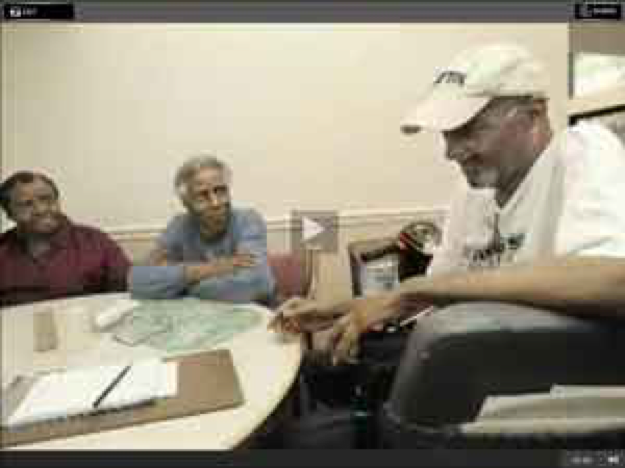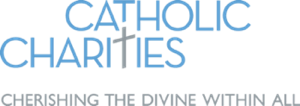A Baltimore Sun article
Written by Brent Jones of the The Baltimore Sun
April 26, 2010

When Herbert Johnson was a kid, an audible cough or a red-hot forehead would send his grandmother into action, dishing out treatments ranging from the unorthodox to the disgusting.
“The emergency room was not an option back then,” said the 73-year-old retiree.
One of Johnson’s first memories comes from a time his grandmother attempted to cure a headache by parting his hair into even sections, sprinkling his scalp with salt and tying brown paper to the ends of his hair. How exactly that was to help is unclear, but the technique has stuck with him, along with countless recollections of other home remedies. And he knows many of his generation have similar experiences.
Johnson, a Baltimore resident, is recording his stories, along with those of dozens of other senior citizens in Basilica Place, a high-rise apartment building. He plans to compile the tales, and connect home remedies with the recipes they describe. The final work, he hopes, will go on display at the downtown branch of the Enoch Pratt Library.
The project has the backing of George Soros’ Open Society Institute, which awarded Johnson a $48,750 grant last year. He is the oldest of the crop of eight grant winners, and the only one working with the elderly.
Just days after learning about the grant late last year, Johnson was hospitalized with pneumonia and spent five months in a rehabilitation center. He now has seven months to complete the project. It’s a daunting task for a man with an original goal of recording 250 seniors. He expects he now will only be able to get to about half that number.
But he’s plowing ahead. Last week, he pulled out his cassette player hitched to an old-fashioned microphone topped with foam rubber and began swapping stories with Dorothy Oliver and Dorothy Hawkins.
Just the subject of home remedies and food made Hawkins sit straight up in her chair.
She’s 85 and grew up in West Baltimore off Saratoga Street. Her mannerisms, movements and diction resemble those of someone 25 years younger as she recalls how her mother of five kept her brothers and sisters healthy during the Great Depression.
If one of the kids had a cold, Hawkins’ mother would heat lamb’s grease, allow it to cool, then rub the substance on the sick child’s chest. She would use a flat iron to press the grease into the skin.
“Next morning when you wake up, you’re good to go,” Hawkins said.
Oliver, 67, spent much of her childhood in South Carolina, and said her mother substituted fatback for lamb’s grease to cure colds.
She said her younger brother was sick one night, and rather than spread the grease on his chest, her mother made the boy drink it.
Oliver said the treatment worked.
“It brought up all that cold out of his chest,” she said.
Johnson took notes as Oliver told this story, throwing out various pork dishes he could link to it, ranging from pigs’ feet to chitterlings, from hog maw to pig ears.
The only child of a Cleveland hairdresser and an auto plant worker whose roots were in South Carolina, Johnson served three years in the Army, spent much of his life as a social worker, married twice, had five children and moved to the Baltimore area in 1999 to be closer to one of his sons.
The idea for the project came to him after a conversation with a grandson, who asked to hear stories about life when Johnson was a boy.
Some of those stories bear scant resemblance to modern life in a city such as Baltimore. In Basilica Place last week, the discussions turned to maladies that are not a part of urban living.
Ringworm was prevalent among children when she was young, Oliver said, and there was only one way mamas handled that affliction.
“They’d put the asafoetida bag on the children, and it would run the worms right out of your body,” Oliver said.
Asafetida bags, those smelly pouches with the funny name — Johnson, Hawkins and Oliver pronounced it “asfidity” — sparked a five-minute discussion among the three.
Hawkins said no one knew what all went into the bags, but they would hang around a kid’s neck, and classmates could smell the infested child coming blocks away.
All three say that type of treatment, while uncomfortable and embarrassing, managed to work.
“We were healthy. The doctors have taken that away from us. But we were healthy when we came along,” Hawkins said. “And I bet some of that stuff we were taking are in the prescriptions now.”
Johnson concurs. His pneumonia and the subsequent 40-pound weight loss notwithstanding, Johnson says he is in fairly good shape, crediting, in part, the methods his elders used on him.
Some of those remedies were nothing more than placebos, said Darrell Haskins, an associate professor for health economics in the African-American studies department at the University of Maryland, College Park. But Haskins says Johnson’s project might help to explain attitudes among the elderly toward modern-day medicine.
“In that sense, it gives us some insight in how they perceive their bodies and how their bodies work,” Haskins said. “Having that type of information would be really valuable.” Haskins added that, from a historical perspective, such stories are priceless, documenting in many cases how people without much means cared for their bodies.
Johnson likes to tell one tale especially. He said he cut his hand on glass, opening a deep gash between his thumb and index finger.
Grandma went to work.
She went to the farthest corner of the room, found some old cobwebs, put them inside the wound and stitched it up with thread.
“There is a gap that younger people aren’t aware about these times,” Johnson said. “But these stories tell who they are and how your values are developed. If you don’t know your background, then you don’t know who you are.”
